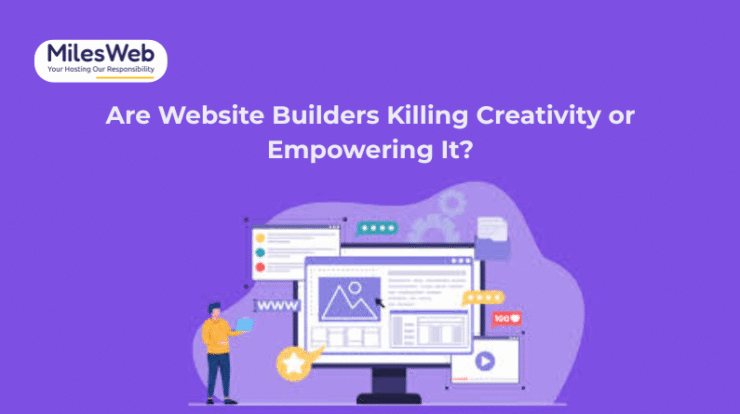
Square space, Wix, WordPress.com, Web flow, and the website builder tools have transformed the process of website development. All these platforms promise ease, speed, and simplicity. However, it also raises the question: Is AI website builder empowering more people to create their own website designs with templates and drag-and-drop interfaces?
It’s a conversation relevant to designers, developers, entrepreneurs, and creatives all around. Some claim cookie-cutter templates and pre-designed elements hinder original design; others argue website builders provide creative freedom for users with no technical ability, who would have previously been locked out. In reality, it is a little of both, depending on how you use them.
The Impact of Website Builder
Templates
Inbuilt templates have pros and cons. Many of you assume them to be the biggest creativity killers. After all, if thousands of people are using the same layout, where is the uniqueness? But here’s another way to look at it. Templates are just a starting point that lays the foundation of website customization at a hosting price for website.
Templates help to ease the burden of staring at a blank canvas, particularly for non-designers. Templates decrease friction, providing a set of boundaries for users to work within to express their brand, voice, and message without getting lost in the layout structure, color theory, and design principles. Even professional designers use templates, usually as a time-saving tool, before modifying and personalizing deeply enough to produce something unique for their clients.
Drag-and-Drop Tools
Drag-and-drop interfaces have often been criticized for their simplicity. But that doesn’t mean the lack of creativity. At the same time, website building tools are easing the design process. They make it possible for artists, teachers, writers, consultants, and even hobbyists to visually communicate ideas without relying on a developer or learning to code.
The opportunity to conveniently and instantaneously view visual components means users can experiment, play, and iterate much faster. Want to try out two homepage designs? You can build both in less than an hour and determine which layout is most effective. This speed creates opportunities for taking risks and exploring possibilities, hallmarks of the creative process.
Design Freedom Is Growing
Earlier website builders had functionality restrictions like no space adjustment or limited fonts. But now it has changed. MilesWeb’s AI website builders and Webflow give users complete control over layers, animations, grids, breakpoints, and more. Even simpler platforms like Wix and Squarespace have evolved to allow deep customization through CSS, developer tools, and flexible design sections.
Whereas website builders are no longer one-size-fits-all. These tools are now more like design canvases rather than a cookie cutter. Advanced users may dive deep into their skills, or no-code users can still create results that look professional and polished with ease. It is not about limiting creativity; rather, it is about making creativity more reachable.
The Creativity Shift: From Coding to Conceptualizing
Not everyone expresses creativity through code, and they shouldn’t have to. They let creators focus on what they are willing to say, how they want users to feel, and why the website exists, rather than spending hours debugging broken HTML tags.
The orientation toward conceptualizing enhances creative thinking. Now an artist can build an online portfolio that reflects their specific aesthetic. A chef can launch a website that feels like their dining experience. A coach can brand their website to reflect their personality and tone. These platforms allow creative visions to come alive faster, and likely without worrying about technical impediments.
Balancing Convenience and Uniqueness
There is an element of balance, of course. If you simply use only stock photos, default settings and prewritten content, you would end up with a website that looks identical to dozens of others. But that isn’t the tool’s fault; that would be on you. Use a stock photo or prewritten content; you are still responsible for being creative, like how using Canva does not preclude someone from having a unique design and using a website builder does not prevent someone from creating an exceptional website.
You have to find a happy medium. Use the templates and drag-and-drop to save you time, but then inject your voice, your colors, and your story into them. That’s tantamount to creativity with a website! We are not trying to invent a new wheel. We are the wheel to represent who you are creatively.
Conclusion
So, do you think that website builders are killing creativity or empowering it? The answer is in the hands of the user. For those who look for a fast and effortless way to launch a website, website builders offer convenience. These tools have deep customization, epic creativity, and the vision to express more powerfully than ever.
Creativity is not only about how many lines of code you can write; it’s about how well you can express an idea, engage an audience, and ultimately deliver something of value to the world. And so in this regard, not only are website builders empowering creativity, they are also broadening who gets to create.

